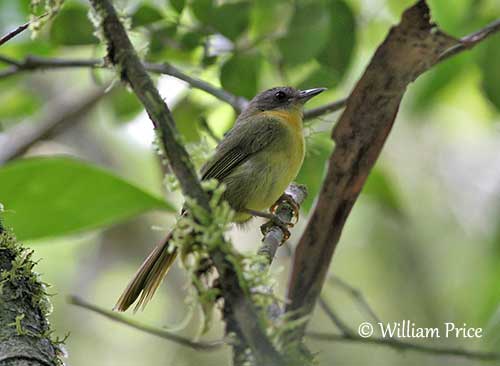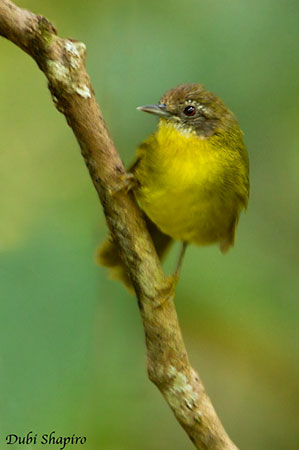
Fr: Éréonesse à queue étagée – Jery à queue étagée
Ang: Wedge-tailed Tetraka - Wedge-tailed Jery
All: Keilschwanztimalie
Esp: Jiji Colicuña
Ita: Jery cuneato
Nd: Wigstaartjery
Sd: kilstjärtad madagaskarsångare
Mal: vangamena
Photographers:
William Price
PBase-tereksandpiper & Flickr William Price
Dubi Shapiro
Dubi Shapiro Photo Galleries & Dubi Shapiro's Pictures on IBC
Text by Nicole Bouglouan
Sources:
HANDBOOK OF THE BIRDS OF THE WORLD Vol 11 by Josep del Hoyo, Andrew Elliott and David Christie - Lynx Edicions - ISBN: 849655306X
The Birds of Africa: Volume VIII: The Malagasy Region: Madagascar, Seychelles, Comoros, Mascarenes - Par Roger Safford, Frank Hawkins – ISBN: 1408190494, 9781408190494- Editeur: A&C Black, 2013
Birds of Madagascar and the Indian Ocean Islands Par Roger Safford, Adrian Skerrett, Frank Hawkins – ISBN: 1472924118, 9781472924117- Editeur: Bloomsbury Publishing, 2015
Birds of Madagascar: A Photographic Guide Par Pete Morris, Frank Hawkins – ISBN: 0300077556, 9780300077551- Editeur: Yale University Press, 1998
CREAGUS - MALAGASY WARBLERS Bernieridae
Fatbirder - Bernieridae - Malagasy Warblers
Wikipedia, the free encyclopaedia
Wedge-tailed Tetraka (or Wedge-tailed Jery)
Hartertula flavoviridis
Passeriformes Order – Bernieridae Family
INTRODUCTION:
The Wedge-tailed Tetraka is endemic to Madagascar. It occurs in the dense understorey of the eastern rainforest where it actively forages while searching for insects.
This species was formerly included in the genus Neomixis (jeries), but from genetic studies, it is apparently not related to this genus. It is rather part of the radiation of Malagasy warblers, oxylabes and “bulbuls”.
The Wedge-tailed Tetraka is threatened by habitat destruction and fragmentation, and its population is declining. The species is currently listed as Near Threatened.
DESCRIPTION OF THE BIRD:
Biometrics:
Length: 12-13 cm
Weight: 9-11 g
The Wedge-tailed Tetraka has olive-green upperparts on nape, mantle, scapulars, wings and tail. The long, loose, graduated tail is slightly wedge-shaped and the outer rectrices are often fanned. The flight-feathers are dark brown and the upperwing-coverts are olive-green.
The underparts are yellow with brighter throat. Belly and undertail-coverts are white. Underwing-coverts and axillaries are olive-green.

On the head, the crown is olive-green and contrasts with the greyish ear-coverts. We can see a pale greyish supercilium. Lores and cheeks are dark olive-brown.
The bill has black upper mandible and grey lower one, but the base is mostly blackish. The eyes are reddish-brown. Legs and feet are greyish-brown to yellowish-grey.
Male and female are similar.
The juvenile resembles adult but it has slightly brighter green back, and the greyish cheeks are indistinct.
RANGE:
The Wedge-tailed Tetraka is found in the eastern forested areas of Madagascar except in Sambirano region. It is locally patchy.
HABITAT:
The Wedge-tailed Tetraka frequents the dense understorey of the eastern rainforest. It is very active among shrubs at lower and mid-levels of the closed canopy, especially in mid-altitude forests. It is generally absent from the lowland forest. This species may also frequent undisturbed and fairly intact forests, but it can be found occasionally in disturbed forested areas. It is mainly found between 400 and 1,400 metres of elevation.
CALLS AND SONGS: SOUNDS BY XENO-CANTO
The Wedge-tailed Tetraka’s call is a thin, descending, spluttering trill, and we can also hear a soft “pwit”.
The song is a series of high-pitched “see” notes interspersed with rapid trills “ptsrrrt”, short high notes and whistles given in rapid succession with short pauses, and lasting several minutes.
While foraging, the bird utters a shrill, nasal “tsee zeezeezeezeezee zee zee” occasionally preceded by shrill “tsit-tsit”.
BEHAVIOUR IN THE WILD:
The Wedge-tailed Tetraka feeds primarily on insects. It forages in the dense understorey, often in mixed-species flocks.
It feeds in tit-like fashion, moving through the foliage and sometimes hanging upside-down. It gleans invertebrates from leaves and often opens up the clumps of dead leaves to get concealed prey.
It forages between one and five metres above the ground, hopping along branches and hovering around the leaves at ends of branches. It is always very active when foraging.

The courtship behaviour of this species is unknown. The Wedge-tailed Tetraka is probably monogamous, solitary nester and territorial. The long, graduated tail probably plays a role during the displays.
The Wedge-tailed Tetraka is resident on the island.
The short, rounded wings and the long tail indicate mostly short-distance flights.
REPRODUCTION OF THIS SPECIES:
There was only one record in January. The nest is a suspended, globular structure, an oval ball with entrance on top at side. It is usually hanging from a branch, about 1-2 metres above the ground. This structure is made with grasses and thin plant matter.
The female lays 2 eggs. Juveniles have been seen in family groups in October and November.
No more information.
PROTECTION / THREATS / STATUS:
The Wedge-tailed Tetraka is threatened by destruction of forest for agriculture expansion and logging.
The species is patchily distributed and not very common in the restricted range at mid-elevation. The population is declining and could be more threatened in the near future.
The Wedge-tailed Tetraka is currently listed as Near Threatened.